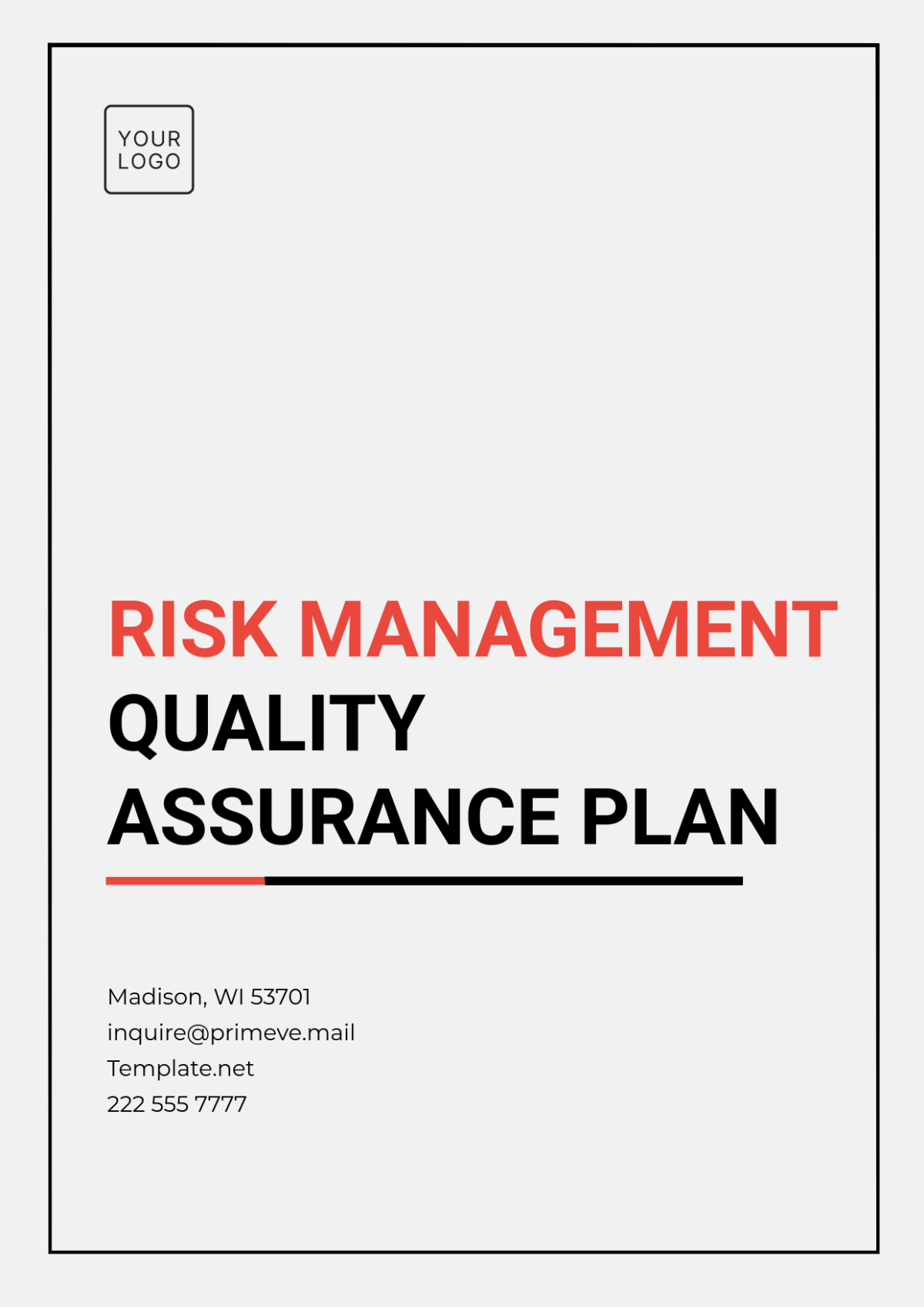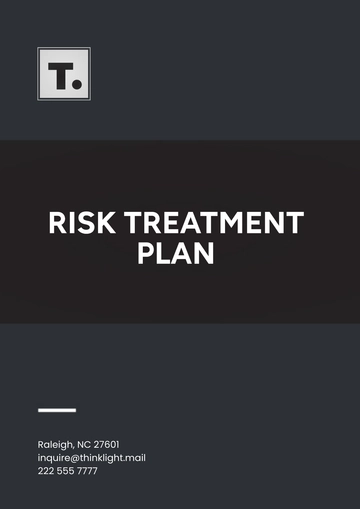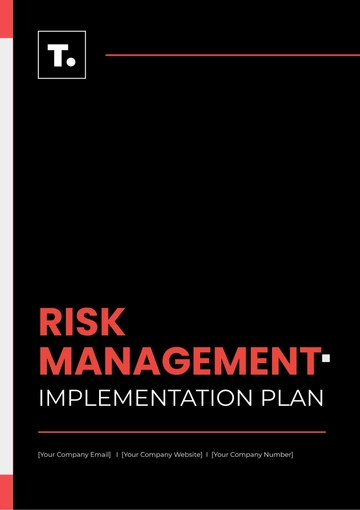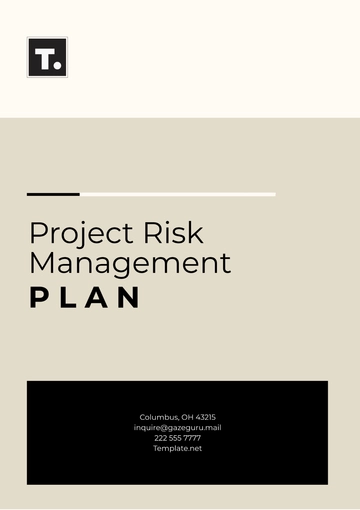Free Risk Management Quality Assurance Plan

Introduction
The purpose of this Risk Management Quality Assurance Plan is to outline the strategies and processes for identifying, assessing, and mitigating risks associated with the Smart Home Device Development project. This plan aims to ensure that risks are managed effectively throughout the project lifecycle, enhancing project success and quality.
Objectives
To identify and analyze potential risks impacting the project.
To develop strategies for mitigating identified risks.
To ensure effective monitoring and communication of risk management activities.
Risk Management Framework
1. Risk Identification
Description: This section outlines the techniques and tools used to identify potential risks.
Methods:
Brainstorming Sessions: Team meetings to discuss potential risks.
SWOT Analysis: Assessing strengths, weaknesses, opportunities, and threats related to the project.
Expert Interviews: Consulting with industry experts to identify risks.
Historical Data Analysis: Reviewing past projects to identify common risks.
Risk Checklists: Utilizing pre-defined checklists for typical risks in technology development projects.
2. Risk Assessment
Description: This section details the process for evaluating identified risks.
Assessment Criteria:
Likelihood: The probability of the risk occurring (e.g., Low, Medium, High).
Impact: The potential effect on the project if the risk occurs (e.g., Low, Medium, High).
Risk Matrix:
Likelihood \ Impact | Low Impact | Medium Impact | High Impact |
|---|---|---|---|
Low Likelihood | Minor scope creep | ||
Medium Likelihood | Delay in hardware delivery | Security vulnerabilities | |
High Likelihood | Non-compliance with regulatory standards |
3. Risk Mitigation Strategies
Description: This section outlines actions to minimize or eliminate identified risks.
Mitigation Strategies:
Risk Description | Mitigation Action | Responsible Party | Timeline |
|---|---|---|---|
Minor scope creep | Define project scope clearly and document changes. | Project Manager | Ongoing |
Delay in hardware delivery | Engage multiple suppliers to ensure timely delivery. | Procurement Team | Before hardware development |
Security vulnerabilities | Conduct regular security assessments and integrate security testing. | Quality Assurance Team | During development |
Failure to meet regulatory standards | Consult with legal experts to ensure compliance with regulations. | Compliance Officer | Ongoing |
4. Monitoring and Reporting
Description: This section describes the ongoing oversight of risk management activities.
Monitoring Procedures:
Regular risk assessment meetings every two weeks.
Status reports on risk management activities to be shared with stakeholders.
Updates to the risk register as new risks are identified or existing risks are mitigated.
Reporting: Monthly reports detailing risk status and mitigation efforts will be presented to project stakeholders via email and during project meetings.
Roles and Responsibilities
Description: This section outlines the roles involved in the risk management process.
Role | Responsibilities |
|---|---|
Project Manager | Overall responsibility for risk management. |
Risk Manager | Facilitation of risk identification and assessment. |
Quality Assurance Team | Ensure that quality standards are maintained throughout the project. |
Team Members | Actively participate in risk identification and mitigation efforts. |
Compliance Officer | Ensure adherence to regulatory requirements and compliance-related risks. |
Stakeholders | Provide input and feedback on risk management activities. |
Conclusion
The implementation of this Risk Management Quality Assurance Plan is essential to effectively manage risks associated with the project. Through systematic identification, assessment, and mitigation, we aim to enhance the quality and success of the initiative, ensuring all stakeholders are informed and engaged throughout the process.
Contact Information
Prepared by: [YOUR NAME]
Email: [YOUR EMAIL]
Phone: [YOUR COMPANY NUMBER]
- 100% Customizable, free editor
- Access 1 Million+ Templates, photo’s & graphics
- Download or share as a template
- Click and replace photos, graphics, text, backgrounds
- Resize, crop, AI write & more
- Access advanced editor
Mitigate potential risks with the Risk Management Quality Assurance Plan Template from Template.net. This editable and customizable template equips you with a comprehensive framework for identifying and managing risks effectively. Easily modify it to suit your specific requirements using our AI Editor Tool, ensuring your quality assurance plan promotes safety and compliance across your organization.
You may also like
- Finance Plan
- Construction Plan
- Sales Plan
- Development Plan
- Career Plan
- Budget Plan
- HR Plan
- Education Plan
- Transition Plan
- Work Plan
- Training Plan
- Communication Plan
- Operation Plan
- Health And Safety Plan
- Strategy Plan
- Professional Development Plan
- Advertising Plan
- Risk Management Plan
- Restaurant Plan
- School Plan
- Nursing Home Patient Care Plan
- Nursing Care Plan
- Plan Event
- Startup Plan
- Social Media Plan
- Staffing Plan
- Annual Plan
- Content Plan
- Payment Plan
- Implementation Plan
- Hotel Plan
- Workout Plan
- Accounting Plan
- Campaign Plan
- Essay Plan
- 30 60 90 Day Plan
- Research Plan
- Recruitment Plan
- 90 Day Plan
- Quarterly Plan
- Emergency Plan
- 5 Year Plan
- Gym Plan
- Personal Plan
- IT and Software Plan
- Treatment Plan
- Real Estate Plan
- Law Firm Plan
- Healthcare Plan
- Improvement Plan
- Media Plan
- 5 Year Business Plan
- Learning Plan
- Marketing Campaign Plan
- Travel Agency Plan
- Cleaning Services Plan
- Interior Design Plan
- Performance Plan
- PR Plan
- Birth Plan
- Life Plan
- SEO Plan
- Disaster Recovery Plan
- Continuity Plan
- Launch Plan
- Legal Plan
- Behavior Plan
- Performance Improvement Plan
- Salon Plan
- Security Plan
- Security Management Plan
- Employee Development Plan
- Quality Plan
- Service Improvement Plan
- Growth Plan
- Incident Response Plan
- Basketball Plan
- Emergency Action Plan
- Product Launch Plan
- Spa Plan
- Employee Training Plan
- Data Analysis Plan
- Employee Action Plan
- Territory Plan
- Audit Plan
- Classroom Plan
- Activity Plan
- Parenting Plan
- Care Plan
- Project Execution Plan
- Exercise Plan
- Internship Plan
- Software Development Plan
- Continuous Improvement Plan
- Leave Plan
- 90 Day Sales Plan
- Advertising Agency Plan
- Employee Transition Plan
- Smart Action Plan
- Workplace Safety Plan
- Behavior Change Plan
- Contingency Plan
- Continuity of Operations Plan
- Health Plan
- Quality Control Plan
- Self Plan
- Sports Development Plan
- Change Management Plan
- Ecommerce Plan
- Personal Financial Plan
- Process Improvement Plan
- 30-60-90 Day Sales Plan
- Crisis Management Plan
- Engagement Plan
- Execution Plan
- Pandemic Plan
- Quality Assurance Plan
- Service Continuity Plan
- Agile Project Plan
- Fundraising Plan
- Job Transition Plan
- Asset Maintenance Plan
- Maintenance Plan
- Software Test Plan
- Staff Training and Development Plan
- 3 Year Plan
- Brand Activation Plan
- Release Plan
- Resource Plan
- Risk Mitigation Plan
- Teacher Plan
- 30 60 90 Day Plan for New Manager
- Food Safety Plan
- Food Truck Plan
- Hiring Plan
- Quality Management Plan
- Wellness Plan
- Behavior Intervention Plan
- Bonus Plan
- Investment Plan
- Maternity Leave Plan
- Pandemic Response Plan
- Succession Planning
- Coaching Plan
- Configuration Management Plan
- Remote Work Plan
- Self Care Plan
- Teaching Plan
- 100-Day Plan
- HACCP Plan
- Student Plan
- Sustainability Plan
- 30 60 90 Day Plan for Interview
- Access Plan
- Site Specific Safety Plan





























